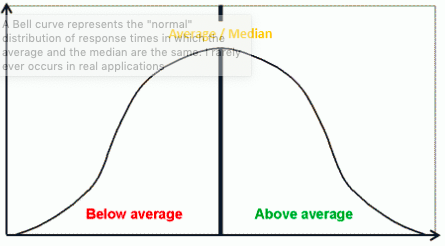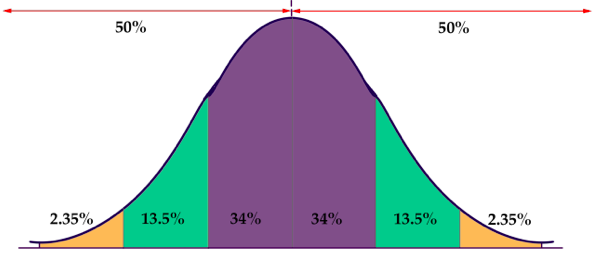This week saw a one-two punch to local news: the GannettHouse merger and news that McClatchy is in serious financial trouble. @Sulliview captures the worry quite well here ( https://www.washingtonpost.com/lifestyle/style/the-death-knell-for-local-newspapers-its-perilously-close/2019/11/21/e82bafbc-ff12-11e9-9518-1e76abc088b6_story.html).
But">https://www.washingtonpost.com/lifestyle... after Newsgeist, I wanted to share a different take on this. A thread below.
But">https://www.washingtonpost.com/lifestyle... after Newsgeist, I wanted to share a different take on this. A thread below.
(2/) I’ve been centering on this for a while, but listening to local news leaders and entrepreneurs talk about what they& #39;re doing has crystalized my sense that when we talk about saving local news, the real problem is that we are trying to save it at scale.
(3/) Scale is the enemy of all our perceived fixes to what ails the news. Economic troubles, problems with context, problems serving underrepresented groups, problems with newsroom diversity.
I will get at why in a bit, but first I want to talk about statistics.
I will get at why in a bit, but first I want to talk about statistics.
(4/) This is a bell curve, what we call a normal distribution in social science. It maps responses based on how strongly respondents feel about a question on a created scale (such as strongly disagree to strongly agree). There’s a few things going on here that are instructive.
(5/) First, notice the middle line. That is your 50% cutline. On your scale of strongly agree to disagree, the middle point usually is what I informally call the Meh Line. People can take it or leave it.
(6/) Second (I promise I’m going somewhere with this!), when you cut the lines up further, notice what’s happening here in a normal curve. About 68% of respondents clump in the middle around the Meh Line. Half are slightly agreeing, half are slightly disagreeing.
(7/) So why do I talk about bell curves? Because the Meh Line was the basis for newspaper business models for decades because that’s where the people were.
(8/) As a thought exercise, here’s a random list of things newspapers - as a function of being a general audience publication - had in the golden era:
Local news
National news
Comics
Arts & entertainment news
Stock tables
Baseball box scores
Weather
Classifieds
Ads
Crime logs
Local news
National news
Comics
Arts & entertainment news
Stock tables
Baseball box scores
Weather
Classifieds
Ads
Crime logs
(9/) If I were to poll a local audience about how much they’d want to subscribe to their local newspaper based on that super incomplete list above, we likely would get bell curves for each of feature. Lots of people clumping along the Meh Line, some who REALLY want it or not.
(10/) The driver behind the newspaper business model was packaging enough stuff people felt lukewarm-to-strong enough about and creating a product people would pay attention to. Maybe I don’t subscribe just for box scores, but hot damn you add stock tables and weather and I’m in.
(11/) That is, in a given market on a given topic, 68% of your audience isn’t really hot to read your product if that’s all you’ve got. But in aggregate, you’ve got something of value because it’s all in one place.
And that works great in a world of media scarcity.
And that works great in a world of media scarcity.
(12/) But notice how tenuous that model is for any technology disruption. First, you’ve assembled a collection of things that people largely are ambivalent about, so if someone comes along and offers it for free, one by one the freeification of those topics devalues your product.
(13/) Apps came along and turned the weather or stocks into apps. Google has largely usurped the all-in-one-place value prop of local news.
This was inevitable, a function of abundance. Stop blaming Google, Facebook, Craigslist, etc.
This was inevitable, a function of abundance. Stop blaming Google, Facebook, Craigslist, etc.
(14/) The hard truth I don’t hear enough in saving-the-news conversations is that the newspaper business model was an accidental consequence of technology. The audience was local, had needs and little reach.
(15/) The internet gave them choices beyond city limits. Scarcity created lock-in, and the internet’s abundance blew up the monopoly.
This. Was. Inevitable.
This. Was. Inevitable.
(16/) So what does this have to do with scale? Well, scale only cares about the middle of the bell curve. To assemble a large audience, those long tails at the Strongly Agree end (2.5% of your audience) are extremely hard to assemble into a general interest product.
(17/) When we talk about saving local news, let’s be real. We’re talking about accountability coverage, investigative and enterprise pieces, issues of justice in our community. “Real news,” as the curmudgeons would say.
The people who want to pay for that are in the long tail.
The people who want to pay for that are in the long tail.
(18/) In the golden years, all that hard-hitting stuff was paid for by assembling a product full of softer stuff that paid for the middle. And those people found free alternatives elsewhere. The middle of the bell curve was subsidizing the end of the bell curve, so to speak.
(19/) So here’s my plea to those of us as we talk about saving local news: if we’re talking about bringing back the glory days of 100-person newsrooms, please stop.
It’s not going to happen.
It’s not going to happen.
(20/) One of the problems with the big chains like McClatchy is they’re desperately trying to find a business model that works but also maintains the scale needed to support a large news org and the debt/pension obligations they have.
(21/) In a world of abundance, unless you& #39;re a big national brand like WaPo or the NYT, niche is your competitive edge. There is revenue there, but the minute you start trying to scale you’re adding topics or coverage areas that drain resources from the core. It’s mission creep.
(22/) A shift to a wider swath of coverage, in service of building a large audience, alienates your core audience that is willing to pay. The larger you get, the more you open yourself to disruption to someone who comes along to do a specific thing you do (but free and better).
(23/) The more we chase the middle, where the people are, the more vulnerable we get. A large newsroom only happens again with commensurate revenue, and chasing that revenue causes you to make choices that dilute your product and open you up to disruptors.
(24/) At Newsgeist, I kept hearing stories from people doing really innovative things. They’re asking their community what their needs are and centering products around meeting high-impact needs people will pay for.
You. Cannot. Do. That. At. Scale. It is the enemy.
You. Cannot. Do. That. At. Scale. It is the enemy.
(25/) I keep hearing hand-wringing over how we aren’t covering marginalized/underserved segments of our community enough. Or we don’t do enough longreads. That context gets lost. That we focus on episodic news at the expense of covering things like crime at systemic levels.
(26/) Why don’t we do these things even though we absolutely should? Because when you chase mass audience, there isn’t enough interest to devote the resources you need to do each of those things well. They are niches we should chase, but they don’t appeal to the middle 68%.
(27/) Small newsrooms, hyperfocused on meeting a specific community need (or even interconnected needs that are closely correlated) are the future.
Trying to be general interest in a world of abundance is a fool’s errand.
Trying to be general interest in a world of abundance is a fool’s errand.
(28/) If the local newspaper dies, I’m not looking for one large digital product to spring up in its place. I want ten, each focused on something different, driven by audience engagement and research to match coverage with community needs and do that coverage deeply.
(29/) Maybe this is the week the music died, as my brilliant colleague @warhovert said in @Sulliview’s piece.
But we’re talking about the death of legacy local news, not local news. It’s the death of an idea that local news must be general interest and try to capture everyone.
But we’re talking about the death of legacy local news, not local news. It’s the death of an idea that local news must be general interest and try to capture everyone.
(30/) I used to be in that camp. I desperately wanted it. I have ink in my blood.
But our nostalgia for the glory days (if those even existed - it was more an economic reality than a coverage reality) is killing our sense of what is possible.
But our nostalgia for the glory days (if those even existed - it was more an economic reality than a coverage reality) is killing our sense of what is possible.
(31/) We need a revolutionary approach to redesigning local news. Re-inflating the newsroom bubble ain’t it.
Starting with the idea that small is not only OK but probably good and (perhaps best!) seems like start of something revolutionary to me.
Starting with the idea that small is not only OK but probably good and (perhaps best!) seems like start of something revolutionary to me.
(32/) There *are* people doing this. They can’t afford to come to our fancy ONA gatherings all the time, but we need to figure out how to make space from them to teach us (and that means funding). I got to hear from a lot of them and was so inspired you wouldn’t believe it.
(33/) But honestly I spent two days listening to people who are bucking conventional wisdom and figuring it out. It is intensive and hard work, from hearing them describe it. It requires focus and a lot of listening (and social science methods!).
(34/) The NYT and WaPo are going to be fine. They can chase masses because of their brand position. I’d like my local mid-major news outlet to try and stop competing with them.
(35/35) That’s it, thanks for letting me post pictures of bell curves on a Saturday morning.
(for those who want it, here’s the thread on one page: http://bit.ly/2rlT4Va ">https://bit.ly/2rlT4Va&q... )

 Read on Twitter
Read on Twitter



